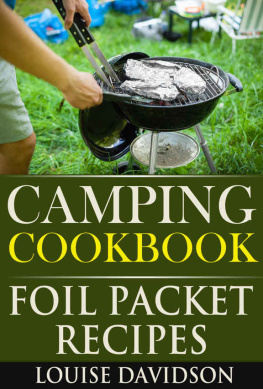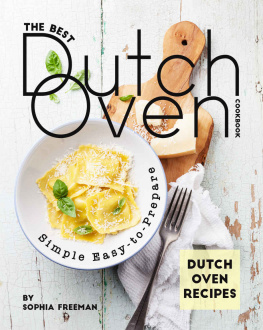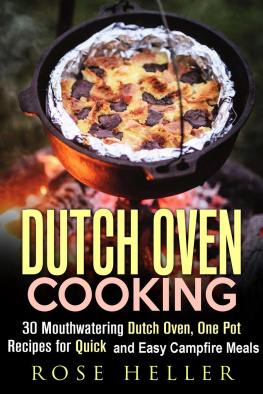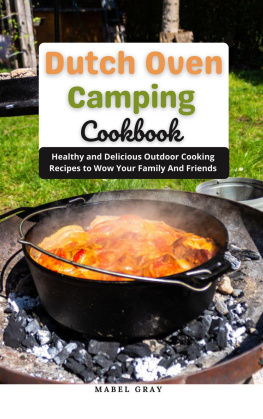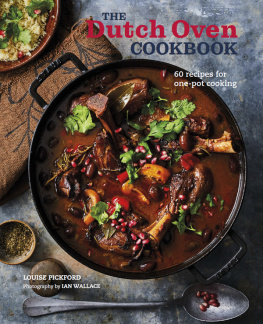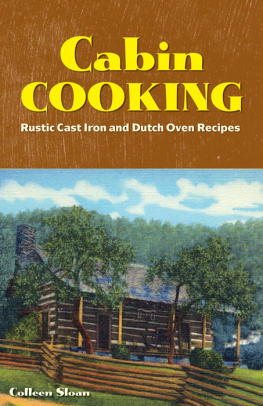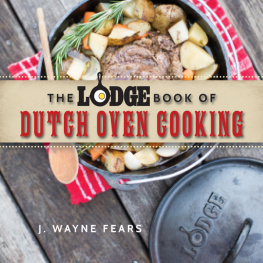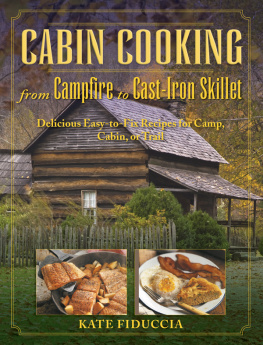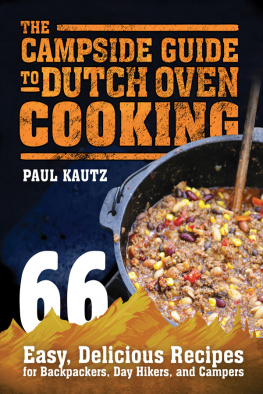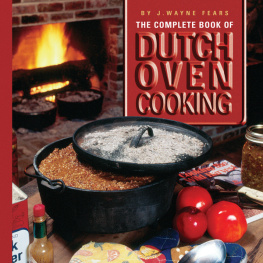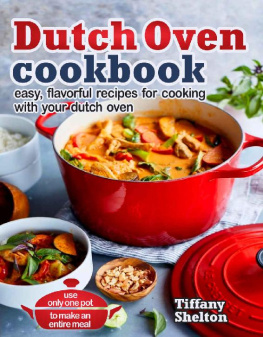CAMPING
COOKBOOK
DUTCH OVEN
CAST IRON RECIPES
Louise Davidson
Copyrights
All rights reserved Louise Davidson and The Cookbook Publisher. No part of this publication or the information in it may be quoted from or reproduced in any form by means such as printing, scanning, photocopying, or otherwise without prior written permission of the copyright holder.
Disclaimer and Terms of Use
Effort has been made to ensure that the information in this book is accurate and complete. However, the author and the publisher do not warrant the accuracy of the information, text, and graphics contained within the book due to the rapidly changing nature of science, research, known and unknown facts, and internet. The author and the publisher do not hold any responsibility for errors, omissions, or contrary interpretation of the subject matter herein. This book is presented solely for motivational and informational purposes only.
The recipes provided in this book are for informational purposes only and are not intended to provide dietary advice. A medical practitioner should be consulted before making any changes in diet. Additionally, recpe cooking times may require adjustment depending on age and quality of appliances. Readers are strongly urged to take all precautions to ensure ingredients are fully cooked in order to avoid the dangers of foodborne illnesses. The recipes and suggestions provided in this book are solely the opinion of the author. The author and publisher do not take any responsibility for any consequences that may result due to following the instructions provided in this book.
CONTENTS
JUST FOR MY READERS
100% FREE BONUS!
To thank you for downloading my book, here is a FREE COOKBOOK that I am sure you will enjoy! Click here to get your FREE gift.
FOR A LIMITED TIME ONLY
Get the Cookbook Publishers book
A Collection of Some of Our Best Recipes
for All Meals of the Day - Volume 1.

Click here to download your FREE copy!
INTRODUCTION
If you have ever been camping or dream of doing so, chances are that you have images in your mind of campfire cuisine. Images such as gooey, toasted marshmallows and grilled, juicy burgers. You may also be wondering if that is all there is? You may begin to think that after several days in the wilderness, you will crave something a little more nutritious, diverse, and flavorful. The good news is that your culinary options at the campsite do not need to be limited. There are many different outdoor cooking options to explore, and Dutch oven or cast iron cooking is one of them.
Dutch ovens have been around for hundreds of years and were used as the primary means of cooking for Northern American settlers. Their sturdiness and durability made them ideal for cooking out in the elements. The true beauty of cast iron/Dutch oven cooking is the even distribution of heat that makes preparing even the most finicky of dishes a breeze. With your Dutch oven you will be able to create an incredible range of breakfasts, savory meals, sweet treats, and snacks. Within the pages of this book you will find everything that you need to expertly craft an array of campfire Dutch oven dishes.
Have many wonderful camping trips and great Dutch oven cast iron cooking!
Louise
Choosing Your Cast Iron Dutch Oven
When it comes to purchasing a Dutch oven, you will find that you have many options to choose from. The choices may seem overwhelming. No matter what brands and price points you care to consider, there are some basic features to pay attention to when it comes to choosing your Dutch oven.
The first is size. A good size for a Dutch oven to take camping is 12-16 inches. Anything smaller than that may not allow you enough space to cook entire meals for multiple people. However, if you are a solo or couples-only camper, you may be able to get away with a smaller model. A 12-inch Dutch oven offers you enough room to prepare medium-sized meals. It fits in nicely at most campsite heat sources and is not so large and heavy that it becomes overly cumbersome to transport.
The next feature you want to look at when choosing a Dutch oven is the type of lid you prefer. Many manufacturers of Dutch ovens assume that they will be used primarily in the home and therefore can be missing some of the necessary features that you may need for cooking at your campsite. When choosing your Dutch oven, pick one that is not only tight fitting, but also has a bit of a concave curve to it, as well as at least a small rim around the edge. This will provide a stable surface for placing hot coals on top of your oven. Also, make sure that the lid has a solid handle that is large enough to be lifted with a lid lifter device.
Finally, choose a Dutch oven with good legs. It should have three evenly spaced legs that raise the oven at least an inch off of the ground. Good legs provide a stable cooking surface that allows plenty of room for hot coals to be placed underneath.
Cast Iron How-To
Cooking with cast iron requires a few extra steps of care and upkeep; however there is no doubt that the results are worth it. Here are a few pieces of advice concerning care, upkeep, and use of your cast iron Dutch oven.
Seasoning your cast iron cookware
The first thing you need to know about cast iron care is seasoning. Seasoning is the process of applying oil to your cast iron, initially to remove contaminants, and also to prevent rust, corrosion, and baked-on food particles from devaluing your cookware. The only time that you ever need to use a dish detergent on your cast iron is before the initial season. Using a hot, soapy mixture, scrub the inside and the outside of the oven. Dry it thoroughly with a cloth, and then place it on a very hot heat source to finish drying the surface. Once it is completely dry, rub an oil or fat, excluding butter, into the surface, both inside and out. Once the oven has been coated, take another cloth and continue to rub and polish the oven until it appears that there is no oily residue left. Place the oven back on the hot heat source for about an hour, flipping the oven upside down at halfway through. Remove from the heat and let cool before handling. Depending on the oven, you may want to repeat this process several times before your initial use. Repeated seasonings help to condition the cast iron and provide an attractive surface sheen. Repeat seasonings periodically through the life of the oven as you see fit.
Cleaning
The next thing to know about cooking with cast iron is that you will use a non-traditional method to keep it clean. After using your Dutch oven, do all that you can to remove any bits of food that are left on it. Add about an inch or more of water into a still warm Dutch oven and let it sit with the lid on. After 15-20 minutes, remove the lid and scrape off any remaining food bits. Discard the dirty water and repeat the process with clean water until the oven is free of food debris. Dry the inside thoroughly with a cloth and place the oven back on the warm coals to help absorb some of the remaining moisture. Once the oven is dried and cool, apply a very light layer of vegetable oil to the surface inside and out.
Cooking with a Cast Iron Dutch Oven at the Campsite
When using a cast iron Dutch oven at your campsite, you will usually be applying heat to both the top and the bottom by means of charcoal briquettes. The recipes in this book assume a temperature of approximately 350F. In order to achieve this, you will use briquettes in numbers that are proportional to the size of your oven. A general rule is to use twice as many briquettes as the diameter of your oven. So for example, if you have a 12-inch oven, you will use 24 pieces of charcoal. A 16-inch oven would require approximately 32. This of course is a very generalized rule that should only serve as a guideline. Always use a thermometer when you are learning to gauge the temperature of your oven, especially if you are using wood rather than coals.


